Blog
A walk through an imaginary city
On 28, Nov 2020 | No Comments | In Uncategorized | By admin
The imaginary city (yet to be named – I’m open to suggestions) is on a river (also yet to be named) established many millennia ago. As any ancient city, it is a palimpsest showing hints to its changes. The walk is documented in a sketchbook with the plan of the city on its cover. It is a walk of discovery. Each page (64 of them) is unanticipated. The walk depends on the map to lead to the next event.
On the inside of the cover is an enlargement of the district where the walk occurs. The walk starts with this district. Can you find it in the overall plan of the city?
The walk starts by entering a passageway.
And so it starts (No. 1) through a portal that reminds me of the strange garden of Bomarzo and its Orcus Mouth. I love drawing light and shadow through the gradations of hatch-work. The shadows are evocative of something there, yet not there. It is meditative. I drift into ‘artist time’. I use a Faber -Castell Pitt S artist pen and try to limit my pallet to black and sanguine colors.
The path leads through the portal into a courtyard (no. 2) with an equestrian statue of a plains Indian from the Omaha tribe instead of the usual Italian prince. My great great grandfather on my father’s side was the last of the Omaha chiefs. He was not a warrior, but he prepared his tribe as best he could for the coming wave of whites. He educated his four daughters and one son in the new culture. My great grandmother fought for Indian land rights in the Nebraska law courts and legislature. She was worthy to be called a warrior with different weapons.
From the courtyard, my walk takes me through a passageway (No.3) with giant bas-reliefs of my Omaha ancestors. Their size reminds me of the scale and dignity of ancient Egyptian sculpture. The passageway leads to a cross-roads, one of many in this walk. The cross-roads is guarded by a stoic Omaha who seems to look deeply into me asking if I know anything about the choice I’m making.
Walking to the Spire (No.4), I am followed by an Omaha ancestor wandering homeless with his travois through this alien city which is built on the tribe’s summer trading grounds next to the river. We are both followed by someone else. Over the doorway is a bas-relief of an Indian chief with an unstrung bow (symbolizing the peace of defeat) under the carved head.
As I walk down the street, I see a shop window (No. 5). I’m a sucker for urban detail like shop windows. Modern shop windows are often continuous planes of glass designed to accommodate the changing of store sizes and types. The old shop windows are simply that: big windows carved into stone or masonry facades – framing the merchandise like paintings or tableaus. The 19th century photos of Paris by Eugene Atget are an inspiration for this sketch. 19th century / early 20th century building facades also include ornament and bas-relief sculpture of historical heroes, mythological gods, and obscure symbols known to the literature-soaked culture of the time – so much richer to the passer-by than the large scale, simplified forms of modern architecture. Just walk in the old town of Prague to soak in the detail of traditional facades. I’ve worked in, again, references to my Native American heritage with the unstrung bow in the shop window and the young brave carved into the keystone. I’m not sure who belongs to the shadow – me or the one following me.
I have arrived at the base of the Spire, adorned with sculpture reminiscent of the 12th Century angels, saints, queens and kings around the doorways of Chartres (No. 6). Again, American Indian references are embedded in the ornament – memories the peoples and their world the City has displaced. Someone overlooks the plaza of the Spire from a balcony supported by a sculptural bracket of an American Indian frozen forever in his work of servitude – joining a long line of captive giants holding up stone balconies in Rome, Paris and Saint Petersburg. I discover a partially open door and decide to explore the interior. A shadow follows.
I enter a short hallway the serves three steep stairs (No. 7). One of the stairs has another partially open doorway at its top landing. What of the other stairs – do they also have open doors at their top landings? Do the three stairs all lead to the same place? Is the choice of a stair irrevocable? The steep, dimly lit stairs are difficult and frightening to climb – high risers and short treads made from polished granite. No handrails are provided. I’m curious about the open door at the top of the stairs. I start to climb.
I walk through the open door out onto the roof (No. 8). The roof is full of old mechanical equipment, flues, vents, ducts, and pipes. It’s an artificial forest, another world. All flat roofs have this potential – an escape from the street, and yet an overlook of the street. A place of solitude or an exclusive party room. An unregulated free space, or a highly structured space accessible for a price. A aerie that gives a view only birds can have. Rooftops can be as mysterious and inaccessible as mountain tops.
I’m looking out over the city from the rooftop (no. 9). It’s a city made up of working class houses, shops and workshops, with these few odd, tree-like structures supporting houses and grounds of the rich. These structures express the exclusiveness, arrogance and thoughtlessness of those with lots of money. They literally overshadow the working class neighborhoods and make clear the hierarchy of the city’s social structure.
Getting down off of the roof is as frightening as climbing the steep, slippery stairs up to the roof. The way down is constructed of ladders which are positioned and flimsily propped like trapezes (No. 10). Nothing is secure.
After carefully climbing down from the roof, exercising the delicacy and balance of a circus performer, I’m faced with another fork in the road (No.11). It is watched over by another god (or goddess) of the cross-roads, silently telling me that it is my choice alone, even if I have no fixed destination. I give a quiet offering (an internal promise) to him or her, asking for a blessing on my journey. Someone continues to follow me – my shadow?
I walk out onto a broad sunlit street with a center, treed median, crowded with pedestrians. (No. 12) It leads east toward the Nishude River (turbid water in the Omaha language) which borders the River Neighborhood, (Neighborhood Two). It is a relief to leave the lonely Spire Neighborhood with its narrow, passageways and echoes of the tribe that once lived where the city now stands. However, the displaced tribe is still present with its homeless in the shadows.
A map of the two neighborhoods: Neighborhood One (the Spire neighborhood), and a portion of Neighborhood Two (the River neighborhood.) (No. 13) The route I intend to walk is marked with arrows.
I’m walking toward the Nishude river along a park-like pedestrian street. (No. 14) Quietly flying in the sky is a solar-powered dirigible. Long distance travel is now solar powered, and much slower.
I arrive at the river. (No. 15) Overlooking the river is a bay window-like turret, the perfect perch for people-watching and watching the river traffic. Coming up the river is a solar-powered barge, its mast a large solar collector. Pedestrians and electric scooters have room to coexist within the wide river walk. The island in the river can be seen, with a mysterious structure hinting at some public use like an outdoor concert facility or an overlook.
I continue along a riverwalk crowded with pedestrians, scooters, and the occasional rider. (No. 16) There are very few automobiles in this city. It is a dense, compact city built for walking. Perhaps there was some kind of gasoline shortage, or the advent of dire environmental impacts due to gasoline powered vehicles which forced the city to limit the use of petrochemical fuels. Perhaps rapid travel was no longer required because of advancements in virtual communication. The expressway system built on the edge of the city is greatly underused (resulting in poor maintenance, and serious structural failures) with the exception of the inclusion in the expressway Right of Way of high speed rail. In the distance is a bridge to the island in the river. On the bridge, like the Ponte Vecchio, or the medieval London Bridge, are structures containing ground floor shops and upper level residential apartments. Power is supplied by large wind turbines. On the river a barge approaches with its solar sail lowered to pass under the bridge.
I walk across the bridge. (No.17) The few vehicles on it are electric powered jitneys taking families and groups of friends out to the large park on the island. Most vehicles are bicycles. The sidewalks are crowded with pedestrians shopping in the many stores, and eating and drinking in the restaurants and bars. Above the activity of the street are apartments with their balconies and bay windows taking in the street scene. The bridge itself is a neighborhood: Bridgetown.
Bridgetown has several large open bays in its building walls that give views up and down the river from it’s interior (No. 18). This is the upriver view of Mt. Abraxas, an active volcano, always threatening to terminate the life of the city, as it has in the city’s distant past.
At the eastern end of Bridgetown, I walk out onto the island which has been molded into a park. The island and park’s name is Elysium – the city’s primary open space and relief from its confined and concentrated urbanity. I walk toward the northern tip of the island, the view of which is dominated by Mt. Abraxas, fitfully slumbering like a dozing cat.
Ag buildings
On 15, Nov 2020 | No Comments | In Uncategorized | By admin
I’m fascinated by grain elevators and other agricultural buildings. They are assemblies of forms unencumbered by conscious design compositions, proportions, rhythm, or contrasts. Their forms are simply driven by function and added or subtracted by necessity. However, in these paintings I’ve tried to capture a looming quality to them – an unhuman aspect, and their loneliness in the windswept eastern plains of Colorado.
I also like the play of light and shadow on their cylindrical forms.
I apologize (to myself, and anyone who reads this blog) for the unprofessional photos of the paintings. They deserve better, this painting in particular. My unconscious seems to want to say something about doorways into somewhere.
I love these unplanned cottonwoods fighting for existence on the plains. The grain elevators remind me of Kerouac’s haiku:
Grain elevators, waiting
for the road
To approach them
Dichotomy Abstracts
On 15, Nov 2020 | No Comments | In Uncategorized | By admin
These abstracts play with the idea of two sides, two ‘hemispheres’, two views of something similar, something divided, yet something reaching out for connections.
The above abstract does try to consciously express something about our racial divide during the pandemic.
A reversible painting, which really is only refers to the animals implied by the grain elevators. I guess the unconscious took over from that simple idea.
11/15/20
mandalas
On 31, May 2017 | No Comments | In Uncategorized | By admin
I’ve been fooling around with mandala-like sketches to build on my Plains Mandala painted drypoint. They are forms that become repositories for symbols which attract me. In a way, the ‘mandalas’ are forays into discovering or illustrating ‘self’. My logic is that if a symbol fascinates me and I want to explore it, then it is speaking to my unconscious. 
Fantastical towers
On 03, Feb 2017 | No Comments | In Drawings | By admin
I have fun postulating odd towers, including their construction with lots of cranes (another favorite). Some of these drawings date back over 35 years. I like to imagine climbing up through them, living on top of them, experiencing the wind, and the thrill/fear of their height. The religious headquarters drawing metaphorically expresses the torturous journey to some sacred place. Some of them imply a defensive attitude toward the ground with perilous stairs to elevated entries. The last drawing inverts the tower with its penthouse close to the ground, providing a surprising gesture of humility.
 |
 |
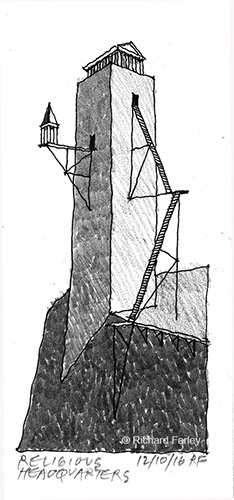 |
 |
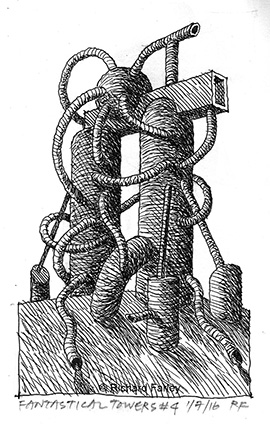 |
 |
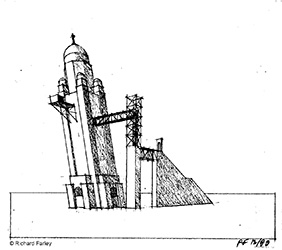 |
 |
Sacred Heart
On 02, Feb 2016 | No Comments | In Urban Design | By admin
I don’t know whether to love or hate some of the street art in my RiNO neighborhood. The art next to Sacred Heart is a good example of my ambivalence. On the one hand it is a clever use of the twin-tee warehouse wall construction in creating an image that changes as you approach it. On the other hand, it is an image that has its roots in juvenile anime, perhaps with meaning only for the initiated adolescent. That it is juxtaposed with the landmark Sacred Heart catholic church is another conundrum. Is it simply a coincidence – a chance encounter between the whim of an immature artist and an object of deep religious meaning? Is it an effort to capture the innocence of children linked to the innocence of faith? Or is it the reverse, a sly critique of religious faith as a naive wishfulness? My money is on the first instance. In any case, I find it disrespectful both to the church as a sacred place and as an architectural landmark, and wish that whoever funded the project had some sense of context and appropriateness.
Topsy Turvey
On 19, Apr 2015 | No Comments | In Collages, Uncategorized | By admin
I’ve been delving into my Native American past. I’m related to Instamaza (Iron Eye), the last Omaha chief through one of his four daughters – Rosalie. I’ve made a number of mezzotint prints of the people in this branch of the family. I’ve also started making acrylic / collages on paper adapting plains indian parfleche designs. This is one of works on paper which expresses the chaos of the last years of their culture.
Industrial buildings
On 19, Apr 2015 | No Comments | In Drawings | By admin
I love the forms of industrial buildings, particularly agricultural buildings. The lacy steel structures juxtaposed against the solid rectangular and round shapes. The ways that they catch the light and cast shadows are inspirations.
Logo
On 21, Feb 2015 | No Comments | In Urban Design | By admin
There is a little story behind my logo. It looks like just a street grid and a north arrow, but it really isn’t. The ‘north arrow’ is an unstrung bow referring to my Native American (Omaha) heritage on my father’s side. It has a sadness to it – the ending of a way of life, a life tied to the land. The street grid is a nod to my profession – making cities livable, beautiful, healthy and exciting places. The logo tries to express respect for both entities – the natural environment and the constructed city.
symbols
On 21, Feb 2015 | No Comments | In Uncategorized | By admin
Symbols embody such mystery for me. I love the subconscious in their meanings. The shell, water, and pearl are feminine images. Botticelli’s The Birth of Venus sums up the beauty of the female, the feminine spirit. As a symbol, so does the shell and pearl.


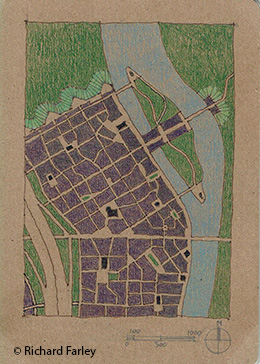

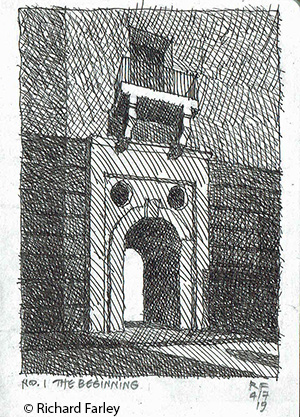















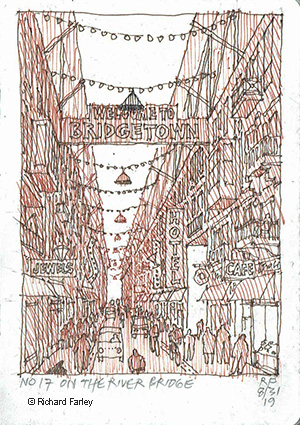
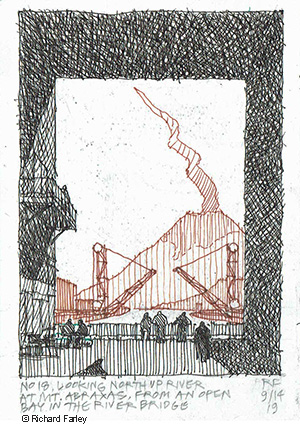

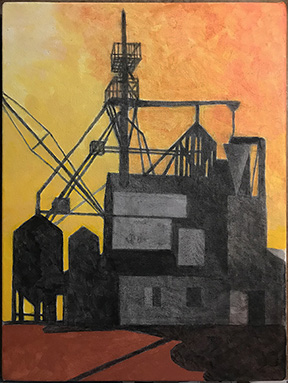

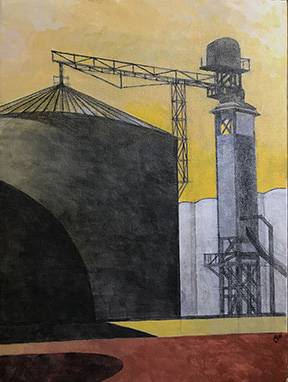








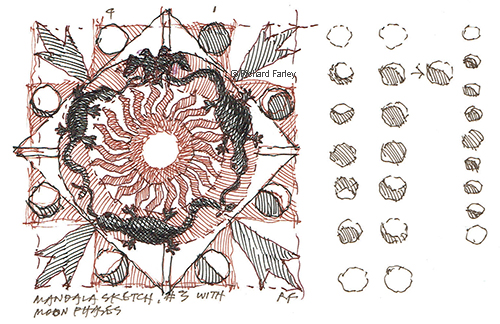





Recent Comments